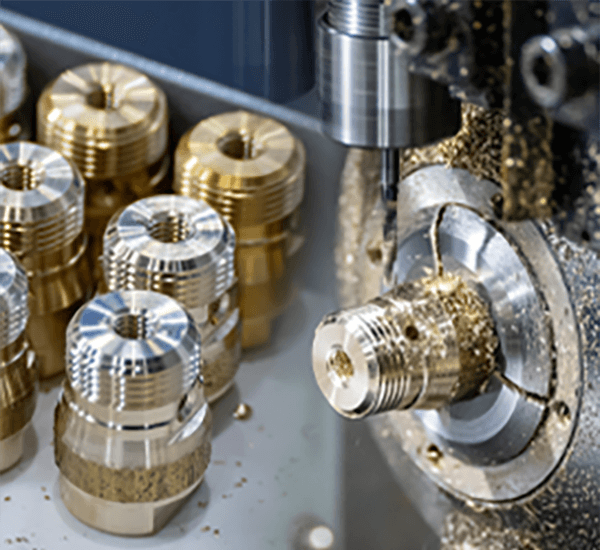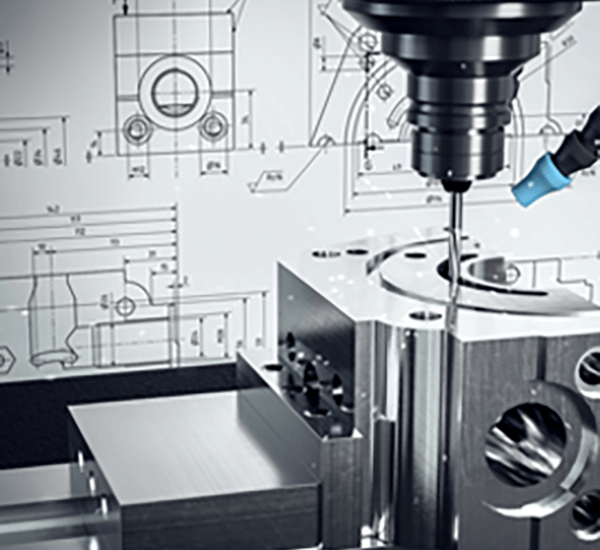
Meeting defined surface quality on a CNC-produced component stands as fundamental.
- Design documents set out definitive finishing requirements for parts
- Designers use Ra (mean deviation) as a numerical indicator of surface roughness
- Familiarity with surface callouts is vital for achieving performance targets
- Clear finish specification affects lubrication behavior, sliding resistance, and lifespan
- Careful reading of finish callouts enables achieving the planned outcome
Precision Principles of CNC Machining

CNC machining represents a game-changing method in production using computerized programs to drive machines that cut complex shapes with high precision.
- This process enables the creation of high-quality parts from a wide range of materials
- Multifaceted CNC utility supports electronics, automotive, and aerospace production
- Numerical control systems guarantee repeatable accuracy between batches
From prototyping to mass production CNC machining plays a pivotal role in shaping modern manufacturing
Understanding CNC Machine Specifications
Understanding equipment specifications can look intimidating initially
Even so practical familiarity and a systematic plan enable decoding machine specs
Begin by identifying the key parameters such as spindle speed feed rate accuracy work envelope and controller type
Every listed attribute influences the equipment’s operational capacity.
In practice greater spindle speed often suits ductile substrates whereas higher feed supports productivity.
Seeing these associations aids in selecting the correct machine for your use
Don’t forget to review maker-supplied manuals carefully.
Producer documentation frequently delivers important notes and clarifies terminology
CNC Machinery: An Exhaustive Guide
Programmed machining equipment comprises computer-managed tools for exact automated fabrication of diverse materials They interpret CNC code instructions to command cutting tools and motion.
- Frequent CNC varieties include mills, lathes, routers, plasma cutting machines
- Cutting methods suit steels, plastics, woods, and layered composites
- Furthermore CNC machines allow for rapid prototyping and low-volume production runs making them valuable assets for small businesses and research centers
CNC Fundamentals and Principles
These tools showcase a blend of mechanical exactness and intelligent software command Versatile machinery employs programmed code to autonomously produce simple parts and complex assemblies Underlying principle converts virtual designs into actual manufactured items.
- CNC fabrication
- Software-guided fabrication
It follows systematic positional moves controlled by code Operators play a crucial role in selecting the appropriate cutting parameters monitoring the operation and ensuring the quality of the final product.
Surface Finish Effects in CNC Production
Delivering planned surface condition during machining is necessary It impacts both functional performance and surface look The material, machining regimen, and subsequent finishing treatments contribute to surface quality.
Refined surfaces boost longevity; rough surfaces can diminish functional performance Code-driven machining enables selective tooling and techniques to attain required textures.
- For example using different cutting tool geometries |coated inserts|spindle rpm choices to produce target surface
- Also surface treatments such as grinding and polishing can refine textures
Understanding parameter influences helps attain the desired surface quality.
CNC Fundamentals: Operations and Uses
Programmed machining provides accurate part shaping across multiple material types They execute coded toolpaths to create intricate parts repeatedly Understanding machine control, programming, and tooling choices is crucial for effective machining
Applications of CNC machining are incredibly diverse spanning numerous industries such as aerospace automotive manufacturing From intricate propeller parts to exacting mold inserts, CNC produces accurate geometries
Surface Finish Standards for CNC Machining
Exact finish callout is important for CNC component manufacturing It assures alignment with required performance and visual expectations Drawings usually depict finish requirements with Ra roughness values The value, shown in µm or inches, quantifies mean surface irregularity height.
When specifying a surface finish callout consider both the required level of smoothness and the intended application of the part

Often a polished surface is selected when precise tolerance and fit are required
Alternatively textured surfaces may aid applications needing traction or increased friction
Provide specific finish callouts in engineering drawings to communicate texture needs List Ra value plus supplementary process guidance like polishing or coating.
Consider that thorough finish callouts underpin quality manufacturing
Kinds of CNC Machines and Their Strengths
There exists a diverse field of CNC machines built to serve many operational purposes They adopt CAD-to-CAM pipelines to steer cutting tools for precise part manufacture.
- Milling machines are renowned for their ability to remove material from a workpiece shaping it into complex geometries
- Lathes excel at producing round parts such as shafts rods and bushings
- Laser, waterjet, and plasma technologies suit intricate shapes and delicate workpieces
Choosing the right CNC depends on production goals material type and required accuracy Machine-specific strengths enable applications in fields ranging from aerospace to automotive engineering.
Securing Optimal Finish Using CNC Machining
Realizing premium surface texture is vital and CNC machining supplies tools to accomplish it Through tailored feed rates spindle selection and tool design engineers control surface formation and limit imperfections Additionally superior tool grades and effective lubrication aid in producing refined textures Well-chosen cutting tactics plus careful setup empower manufacture of parts with exceptional surfaces.
Achieving Surface Finish in CNC Programming
Tuning code to influence finish plays a central role in meeting quality aims Cutting parameter selection—feed, speed, tool geometry—controls surface finish Precise setting selection and effective coolant control support high-quality finishes.
- Additionally routine tool checks and upkeep maintain consistent finish quality Plus regular inspection and maintenance of tools copyright finishing standards Furthermore cnc full form machine regular tool maintenance and inspection are essential for ensuring a consistent and high-quality surface finish over time
- To improve surface outcome account for material, roughness target, and application
- Path simulation offers insights to adjust cutting settings and reduce defects
- Continuous tool maintenance and oversight preserve high finish consistency
